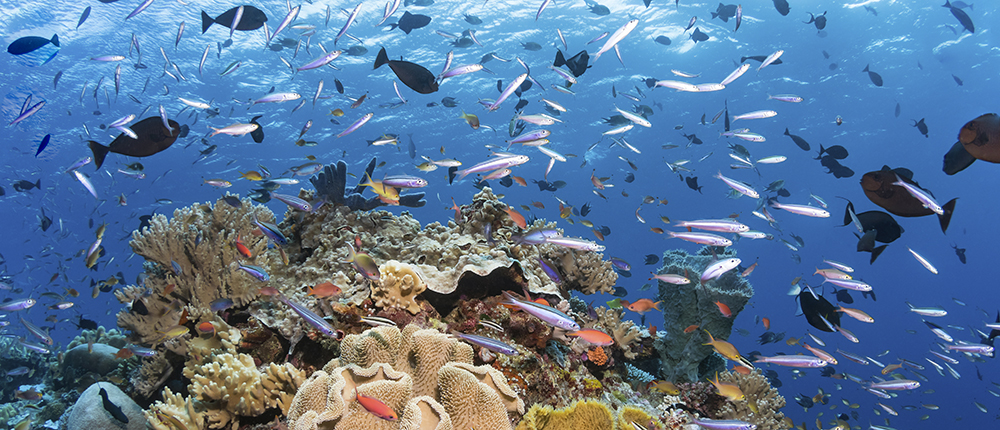Top of the Reef
At Wakatobi, the shallows aren’t just for off-gassing
Steep walls and dramatic seamounts make for exciting dives, and there are a number of sites in Wakatobi that offer these profiles. But many of these same sites offer something that few other places can. When reefs rise sharply from deep water to within a meter or two of the surface, divers can stretch bottom times beyond the hour mark, and discover the colorful world of the shallows.
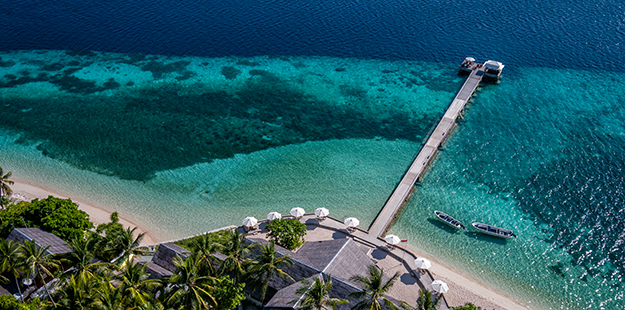
A stunning view of the water’s colorful transition from deep blue to aquamarine on the House Reef in front of the Longhouse. Photo by Didi Lotze
On arrival, guests receive a first hint of what awaits as the transfer boat pulls up to the resort jetty. Below, the water makes a sudden change from deep blue to sparkling shades of aquamarine to views of the corals and seagrass beds peeking through the sunlight. This is the outer edge of the House Reef, which lies less than 80 meters from shore, and is available for divers and snorkelers to enjoy day or night.
Most first dives at the resort are made on the House Reef, and it provides a good example of what is to come. After making a short swim, or hopping in at the outer end of the jetty, divers are suspended on the edge of a steep slope that rises abruptly from deep water to snorkeling depths. And just across the channel, the dive sites of Sawa island offer even more dramatic profiles, with vertical walls that top out within an arm’s reach of the surface.
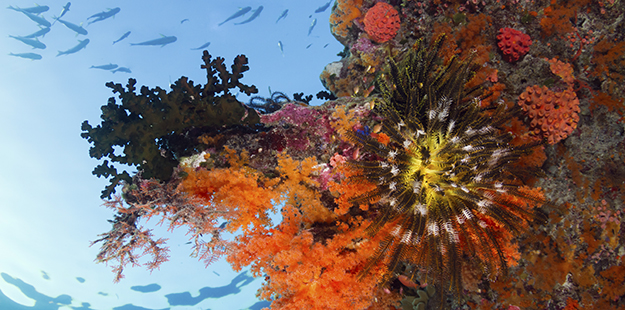
On sites like Magnifica and the House Reef wall divers can free fall into the depths, where colorful sea fans and sponges thrive, then make a leisurely ascent back up to the shallows. Photo by Walt Stearns
A favorite site around Sawa, west of the resort, is Magnifica. Descending from a small plateau perched on a tall vertical wall, divers can free fall into the depths, where black coral, colorful sea fans and huge sponges thrive, then make a leisurely ascent back up the wall, passing through schools of jacks, barracuda and snappers, and hunting for macro life in the many nooks and crannies of the reef.
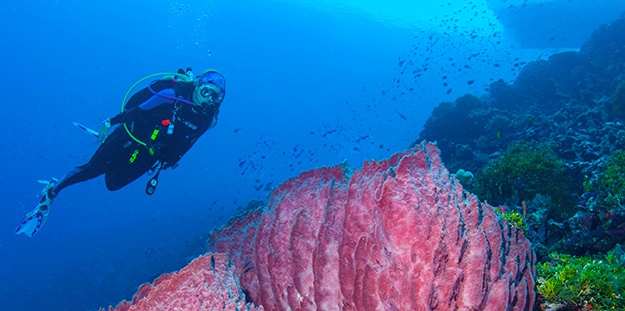
At Wakatobi, the ascent leads to the bright world of the upper reef, where corals and large sponges catch the sunlight. Photo by Mathis Weatherall
In many places, this type of wall dive would end with a safety stop, hanging on a down line or swimming towards shore. But at Wakatobi, the ascent leads to the bright world of the upper reef, where various hard and soft corals spread into large formations to catch the sunlight. Thanks to dive computers, profiles such as this allow divers to routinely enjoy bottom times of 70 minutes or more, and spend up to four or more hours in the water each day.
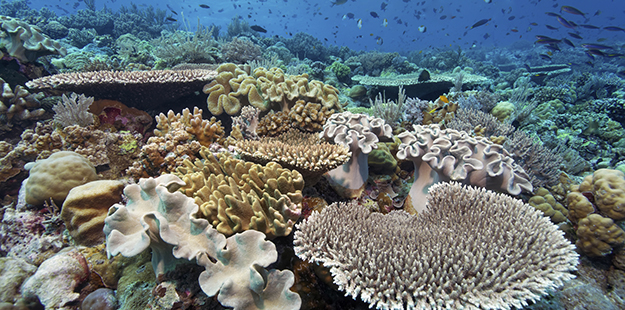
Acropora corals can grow to formations that resemble a tabletop, some larger than a dining room table. Photo by Norbert Probst
One of the reef building corals most indicative of the shallows are in the Acropora family. To thrive, these corals require water that is free of sediment and pollution, as well as provides bright light and oxygenation from water motion. Most Acropora species form a tangle of slender branches, while others grow to formations that resemble a tabletop, some bigger than a dining room table.

Among the varieties of reef fish living at the top of the reef are wrasse, damselfish, anthias and surgeonfish. Photo by Marco Fierli, marcof8.com
Adding to these majestic corals is the numerous varieties of reef fishes such as wrasse, damselfish and anthias, many of which live as large colonies among them. Closer looks reveal macro sightings such as ‘odd-couple’ pairings of blind shrimp with their ever-watchful guardian gobies. Other prize sightings include ghost pipefish, blue-spotted stingrays, octopus, cuttlefish and more.
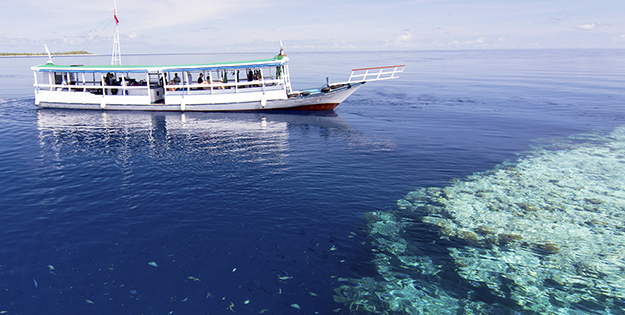
Consistently calm seas allow us to provide divers and snorkelers with comfortable boat rides and easy entries and exits. Photo by Walt Stearns
The coral structures of these shallow reefs are sheltered from the ravages of typhoons and storm surge because Wakatobi sits in an area that rarely sees bad weather or rough seas. This allows the reefs surrounding the resort to develop without damage, and also provides a bonus to divers and snorkelers in the form of relaxing boat rides and easy entries and exits to dive boats.
Situated in the heart of the world’s most bio-diverse marine ecosystem, Wakatobi is home to thousands of varieties of fish, with even greater numbers of invertebrates. Marine life thrives under the protection of the resort-sponsored no-take zone. This initiative is especially important to the shallow reefs because they are particularly vulnerable to impacts such as destructive fishing practices.
Ready to spend some quality time in the shallow waters of Wakatobi? One of our guest experience consultants can help you make it happen. Complete a trip inquiry at wakatobi.com or contact us at office@wakatobi.com.
Visit us on Facebook.


